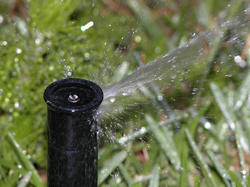Watering lawns and landscape plants can account for up to 50% of an average homeowner's total water use. Watering a typical 5,000 square-foot yard with an in-ground sprinkler system could cost more than $10 per application.
By properly creating and maintaining a water-efficient sprinkler system, you can reduce water usage while maintaining an attractive landscape.

